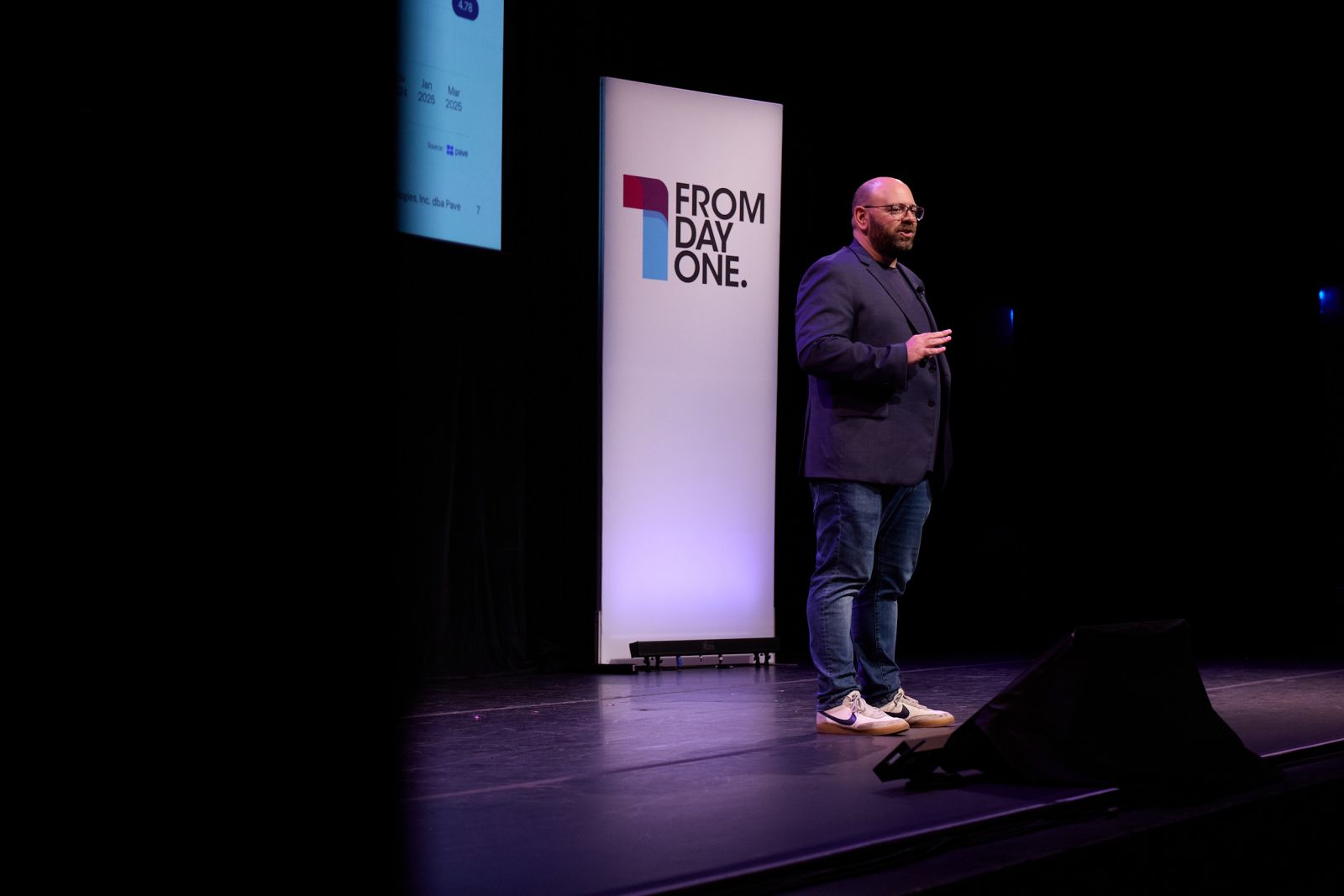How AI is Transforming the Workforce in Real-Time


It’s no secret that AI is dramatically transforming the composition of today’s workforce. White-collar job opportunities for new graduates are disappearing at an alarming rate, and managers are overwhelmed by increased responsibilities as companies respond to new AI tools and practices.
“Is AI taking jobs? Our answer would be yes, it is taking jobs. The article that we contributed to in Fortune was based on this theory that it’s happening from the bottom up,” said Alex Cwirko-Godycki, VP of strategy and general manager of market data at Pave. Using real-time data recently featured in Fortune magazine, Cwirko-Godycki discussed current trends and the real impact of AI during a thought leadership spotlight at From Day One’s San Francisco conference.
In the last two and a half years, the quantity of entry-level employees aged 21 to 25 at public companies has declined from 15% to under 7%, he said—a reduction of nearly 50%. “The reason we think this is happening is that public companies are actually moving much faster to realize AI efficiencies [and] there is more pressure [for them] to show progress on the use of AI.” Company leaders are inclined to push to demonstrate these efficiencies to meet investor expectations.

As the average worker age increases, the rapid elimination of entry-level roles like sales development reps, marketing associates, or HR associates during this time raises long-term talent pipeline concerns, says Cwirko-Godycki. The raw numbers show a drop of only one-half of one percent—but in a data set of two million employees, that equates to thousands of jobs. “The question then becomes: if you're not hiring entry-level sales development reps, who is your next account executive?”
Along with these changes, middle management has an increasing mandate to do more with less. During this two-and-a-half-year period, managers and directors grew their spans of control by as much as 16%, causing Cwirko-Godycki to raise the question: “What is the limit of an overloaded manager?”
“There is research that says most people can only really manage six good interpersonal relationships at any given time,” he said. “So, between your family and your work, you're probably past that number. But if you're managing 12 people at work, there's a very low probability you’re going to do a good job managing all of them,” he said.
Changes in Workforce Architecture
According to Cwirko-Godycki, jobs with AI or machine learning (ML) in the title have almost doubled in two years, and he and his team are excited to see how these roles will evolve.
An emerging trend as companies experiment with AI is the addition of new positions—like prompt engineers and go-to-market engineers—that bridge AI integration with existing business processes. These roles exist across departments like revenue operations, marketing operations, and sales operations.
“These are people being deployed into various business functions because technology is becoming so important [and] now everyone's trying to bring AI into everything,” he said. “So, you need engineers on the ground who understand the business process and can connect the dots between the new technology and what you’re trying to achieve.”
There is also debate about whether AI engineers and AI researchers will merge with software engineers in the future, or remain a distinct job family with separate functions and their own compensation model.
Compensation Trends for AI Roles
With ample media coverage discussing the impact some of these roles have on company budgets, let’s examine the numbers. AI/ML roles comprise one percent of the over two million workers in Pave’s data set, and AI researchers represent 14% of the AI/ML category.
Pave’s salary data shows that, besides extreme outliers, base pay for these roles follows consistent, predictable compression and distribution standards. However, Cwirko-Godycki said that equity pay is “much more widely distributed and extremely right-skewed,” and can vary by as much as 7.8X for the top one percent of AI researchers.
While a tiny fraction of the workforce commands these premium salaries, he and his team advise clients: “If you’re worried about things like burn rate and managing your compensation budget, and you’re going to spend a ton of money on this talent, you better be really, really sure that you’re hiring the right person before you break the bank.”
Editor’s note: From Day One thanks our partner, Pave, for sponsoring this thought leadership spotlight.
Jessica Swenson is a freelance writer and proofreader based in the Midwest. Learn more about her at jmswensonllc.com.
(Photos by David Coe for From Day One)
The From Day One Newsletter is a monthly roundup of articles, features, and editorials on innovative ways for companies to forge stronger relationships with their employees, customers, and communities.